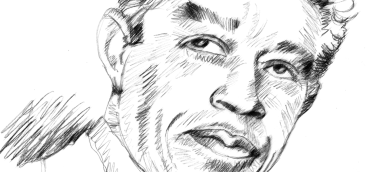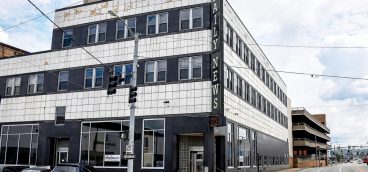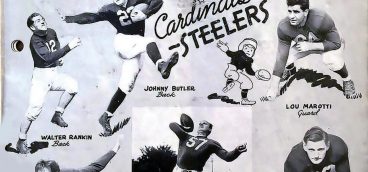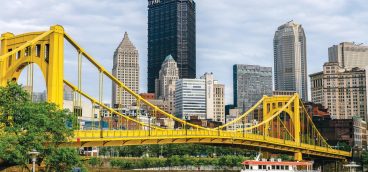Pittsburgh’s Contributions to the World, Pt. III
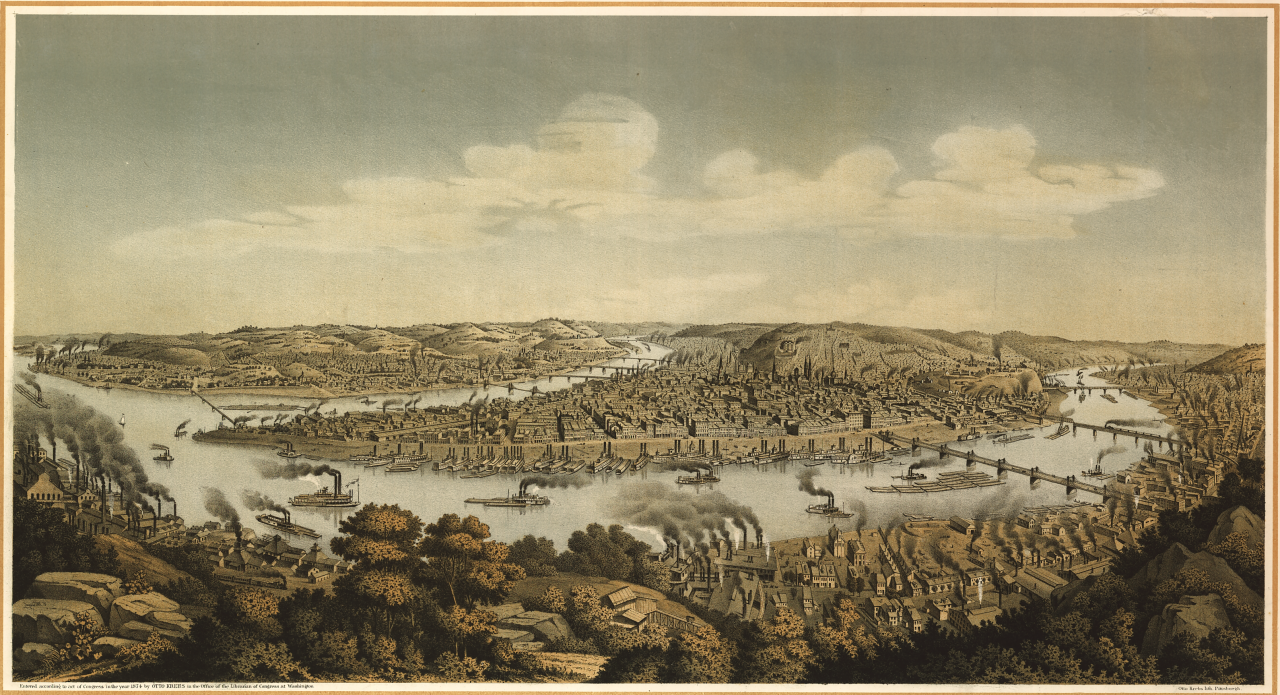
To celebrate the beginning of our 20th year, we’ve set out to catalogue the contributions that Pittsburgh and western Pennsylvania have made to the world. The list has grown and grown, and despite our best efforts, we know we’ll leave out key contributors. I think you’ll find that this small city at the confluence of three rivers has played an astonishingly outsized role in the creation of this country and the world we inhabit. So, read on, and be inspired to pick up the gauntlet and take your turn in building this great American city – Douglas Heuck
Children’s Hospital of Pittsburgh – leader in pediatric care
Starting with 15 beds in 1890 as the Pittsburgh Hospital for Children, what is now UPMC Children’s Hospital of Pittsburgh is a national leader in children’s care and research. It has also been one of the nation’s leading centers of pediatric organ transplantation.
The Homestead Strike and Birth of the U.S. Labor Movement
Pittsburgh has been at the heart of the U.S. labor movement, serving as a battleground for workers’ rights and unionization efforts. During the late 19th and early 20th centuries, the city’s steel mills, coal mines and factories were notorious for harsh working conditions, long hours, and low wages. These conditions spurred workers to organize, leading to pivotal strikes and confrontations that shaped labor history. One of the most significant events was the Homestead Strike of 1892, in which 26,000 members of the Amalgamated Association of Iron, Tin and Steel Workers struck at Andrew Carnegie’s Homestead Steel Works to protest wage cuts and the harsh policies of Henry Clay Frick. The strike escalated into a violent clash when Frick hired Pinkerton agents to break the picket line, resulting in 11 deaths and a national outcry. The strike was broken when 8,500 national guardsmen appeared, setting the labor movement back for decades.
The First Pro Football Player
Pudge Heffelfinger was widely regarded to be the first professional football player. In 1892, he was paid $500 to play for the Allegheny Athletic Association, marking the first documented instance of a paid football player. His pioneering role in the game laid the foundation for professional football, solidifying Pittsburgh’s place in the sport’s early history.
The Ferris Wheel
One of the most recognizable amusement park attractions in the world, the Ferris wheel was created in the Pittsburgh offices of George Washington Gale Ferris Jr., an engineer and bridge builder who designed the first Ferris wheel for the 1893 Chicago World’s Fair. The original wheel was a marvel of engineering, standing 264 feet tall and capable of carrying over 2,000 passengers. It symbolized American ingenuity and ambition during the Gilded Age. Pittsburgh’s industrial expertise, including its production of steel components for the wheel, highlighted the city’s role in one of the most famous engineering achievements of the 19th century.
Paleontology and The Carnegie Museums of Pittsburgh
Founded by Andrew Carnegie in 1895, the Carnegie Museum of Natural History has played a significant role in advancing the field of paleontology. The museum houses one of the world’s largest collections of dinosaur fossils. Its most famous specimen, Diplodocus carnegii, was discovered during a Carnegie-sponsored expedition in 1899 and named in his honor. Today, the museum remains a global leader in paleontology, attracting researchers, educators and visitors from around the world and conducting cutting-edge research, including field work, fossil preparation, and evolutionary studies.
PPG Industries – World Leader in Glass and Coatings
Originally founded as Pittsburgh Plate Glass Company in 1883, PPG has been a world leader in manufacturing various products. Initially focused on manufacturing high-quality glass, PPG quickly grew into a global leader in the coatings, specialty materials, and chemicals industries. Its innovations in glass production changed the construction and automotive sectors, making the company a cornerstone of Pittsburgh’s industrial economy.
Over the decades, PPG expanded its portfolio to include paints and coatings used in everything from aerospace to consumer goods. The company’s iconic headquarters, PPG Place, is a striking landmark designed by architect Philip Johnson. The “Glass Castle” in Downtown features reflective glass panels that symbolize the company’s expertise. Today, PPG operates in more than 70 countries but remains connected to its roots.
The Birthplace of Philanthropy
Pittsburgh is the birthplace of philanthropy because of Andrew Carnegie, whose 1889 essay “The Gospel of Wealth” outlined the moral obligation of the wealthy and created what would become a new industry: philanthropy. The idea spread across the world, but nowhere did it take hold more than in Pittsburgh, where setting up philanthropic foundations has become the local ethic. Until investor Warren Buffet pooled his philanthropic money with that of Microsoft founder Bill Gates, catapulting the eleemosynary wealth of Seattle to the top, Pittsburgh had more philanthropic wealth per capita than any city in the world.
Carnegie’s approach to philanthropy was revolutionary for its emphasis on addressing root causes rather than temporary relief. He focused on creating opportunities for self-improvement, believing that investments in education, science, and the arts would empower individuals to better their circumstances. His views contrasted with the more transactional charity prevalent at the time and reshaped the practice of giving.
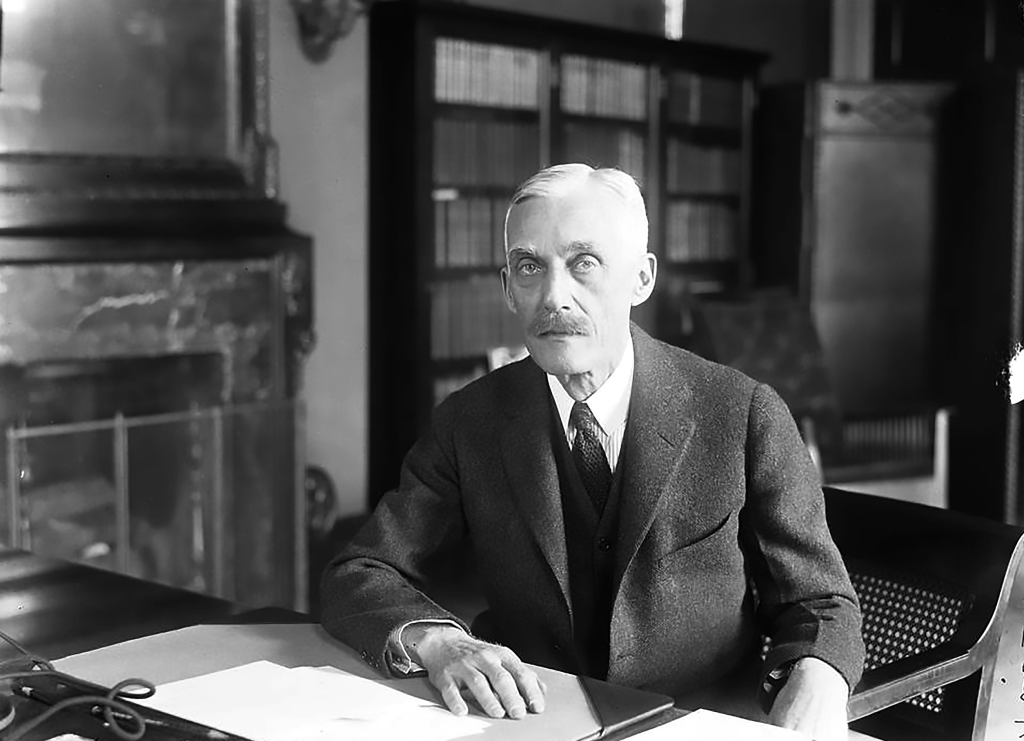
America’s First Venture Capitalist – Andrew Mellon
One of America’s wealthiest industrialists and most influential philanthropists, Mellon was born in 1855 and inherited his father Thomas Mellon’s banking empire, transforming T. Mellon & Sons into one of the most powerful financial institutions of the Gilded Age. Under his leadership, Mellon Bank financed the growth of the steel, aluminum and oil industries. Mellon was instrumental in helping to establish Pittsburgh as a center for industrial innovation. His financial acumen and strategic investments earned him immense wealth, but Mellon’s influence extended far beyond business. As Secretary of the Treasury from 1921 to 1932, Mellon played a pivotal role in shaping U.S. economic policy; he advocated for tax reductions and balanced budgets during the Roaring Twenties.
Beyond his business and political achievements, Mellon was a visionary philanthropist. He donated substantial sums to the University of Pittsburgh, financing construction of the iconic Cathedral of Learning. Mellon also supported medical research, funding the establishment of the National Institutes of Health (NIH), which remain a cornerstone of American public health. Mellon’s most enduring contribution is the National Gallery of Art in Washington, D.C.
The Pittsburgh Press – Powerful afternoon daily
The Press was a prominent daily newspaper in Pittsburgh from 1884 to 1992. Known for extensive local reporting and investigative journalism, The Press played a vital role in documenting the city’s transformation. As an afternoon daily, it traditionally catered to the working-class. But it became a national leader in investigative reporting and award-winning writing in the 1980s, winning two Pulitzer Prizes, including the prestigious Gold Medal for Public Service, the highest Pulitzer Prize. The newspaper’s motto was inscribed on a bronze bust of founder E.W. Scripps: “Give Light and the People Will Find Their Own Way.”
The Creation of Electric Lighting
Electric lighting became commercially viable thanks to innovations by George Westinghouse, whose work in Pittsburgh transformed electricity distribution. Westinghouse’s alternating current (AC) system enabled the widespread adoption of electric lighting. His vision and Pittsburgh’s industrial expertise made the city a key player in the electrification of homes, factories, and public spaces.
The Carnegie International – 129 Years of Avant-Garde Art
Established in 1896, it’s one of the nation’s oldest and most prestigious contemporary art exhibitions. Held at the Carnegie Museum of Art, the event was conceived by Andrew Carnegie to showcase cutting-edge art and connect Pittsburgh with the global art community. The exhibition originally focused on paintings but has since expanded to include diverse media, reflecting the evolution of contemporary art. Over its history, the Carnegie International has introduced American audiences to artistic movements and international artists. It has featured works by luminaries such as Pablo Picasso, Henri Matisse, and Jackson Pollock, alongside emerging talents.


The Pittsburgh Symphony Orchestra – Pittsburgh’s Greatest Cultural Export
Founded in 1896, the PSO is one of the most prestigious orchestras in the world. Based at Heinz Hall, it has earned international acclaim for its performances and recordings, showcasing a repertoire that spans classical masterpieces to contemporary works. Renowned conductors such as Fritz Reiner, William Steinberg, Andre Prévin, Lorin Maazel and Manfred Honeck have shaped its artistic vision, elevating the orchestra to global prominence.
The Pittsburgh Pirates – Let’s Go Bucs!
Dating back to 1882, the Pittsburgh Pirates is one of the oldest franchises in Major League Baseball. Originally known as the Alleghenys, the team became the Pirates in 1891 and quickly dominated baseball. The team’s legacy includes five World Series championships, the first of which came in 1909, led by Hall of Famer Honus Wagner. Famous crooner Bing Crosby was once a part owner.
The team is perhaps best remembered for its 1960 World Series victory, which culminated in Bill Mazeroski’s dramatic walk-off home run in Game 7 against the New York Yankees. The Pirates experienced another golden era during the 1970s, winning championships in 1971 and 1979, with a team nicknamed “The Lumber Company” for its hitting prowess, with legendary players such as Roberto Clemente, Willie Stargell, and Dave Parker. Among the team’s oddest feats occurred on June 12, 1970, when pitcher Dock Ellis took LSD hours before a game — having forgotten what day it was after partying the night before — and proceeded to pitch the only no-hitter of his career, high as a kite. The Pirates’ home, PNC Park, is regarded as one of baseball’s most beautiful stadiums, offering breathtaking views of the city skyline and the Allegheny River.
Nellie Bly – Pioneering Investigative Reporter
Born Elizabeth Cochran in 1864 in Armstrong County, she was a trailblazing journalist and adventurer who broke barriers for women in the media. Bly’s career began at The Pittsburgh Dispatch, where her bold reporting on labor rights and women’s inequality gained her widespread recognition. Her articles often focused on the struggles of Pittsburgh’s working-class citizens, making her a voice for the voiceless. Bly’s most famous work came after she moved to New York City and joined The New York World. She gained international fame for her undercover exposé of conditions in a mental asylum, which she described in her book “Ten Days in a Mad-House.” In 1889, Bly embarked on a record-breaking trip around the world in 72 days, inspired by Jules Verne’s novel “Around the World in Eighty Days.”

U.S. Steel – One of America’s Most Iconic Companies
The United States Steel Corporation has been a cornerstone of Pittsburgh’s industrial legacy since its founding in 1901. Established by Andrew Carnegie, J.P. Morgan, and Charles Schwab, U.S. Steel became the largest steel producer in the world, fueling the city’s rise as the “Steel City.” The company’s innovations in steel production and infrastructure altered construction, transportation, and energy.
American Bridge Corporation – The Empire State Building and Golden Gate Bridge
The American Bridge Company has been a leader in steel construction and engineering since its creation in 1900 by financier J.P. Morgan. The company helped to construct some of the world’s most iconic structures, including the Empire State Building, the Golden Gate Bridge, the Mackinac Bridge, and the Sydney Harbour Bridge. Its expertise in large-scale projects has made it a mainstay in Pittsburgh’s industrial legacy. The town of Ambridge, Beaver County, grew up around the plant.
Gulf Oil – A Mellon Start-up
One of the largest and most influential oil companies of the 20th century, Gulf was founded by the Mellon family in 1901. The company’s origins trace back to the discovery of the Spindletop oil field in Texas, which Gulf financed and developed. Headquartered in Pittsburgh, Gulf played a pivotal role in establishing the modern petroleum industry, pioneering innovations in refining, distributing, and marketing. The company’s distinctive orange and blue logo became a global symbol of energy and progress. Gulf’s contributions to the oil industry extended to advancements in petrochemicals and the expansion of international markets. In the 1980s, Gulf merged with Chevron, marking the end of its independent operations.
The Oakmont Country Club Golf Course
Oakmont Country Club is one of the most prestigious and challenging golf courses in the world. Designed by Henry Fownes and opened in 1903, Oakmont is renowned for its fast greens, deep bunkers, and demanding layout, testing even the best golfers. It has been the site of legendary performances by players like Ben Hogan, Jack Nicklaus, and Arnold Palmer. The course has hosted more U.S. Open championships than any other, cementing its place in golf history.
The First World Series Game
On Oct. 1, 1903, Pittsburgh hosted the first World Series game when the Pittsburgh Pirates faced off against the Boston Americans (now the Red Sox) at Exposition Park. Although the Pirates ultimately lost the series, this matchup marked the beginning of what would become one of the most celebrated traditions in sports.
The Carnegie Hero Fund – Rewarding Selfless Courage
Of all of the philanthropic endeavors Andrew Carnegie started, the Hero Fund was his favorite. He established it in 1904 to recognize and reward acts of extraordinary heroism. Inspired by the bravery of those who risked their lives during a mining disaster in Harwick, Pennsylvania, Carnegie created the fund to honor individuals who perform selfless acts of courage in civilian life. The fund provides financial assistance to honorees or their families, often posthumously, emphasizing Carnegie’s belief in the importance of service to others. Based in Pittsburgh, the Carnegie Hero Fund has recognized over 10,000 heroes across the U.S. and Canada.



